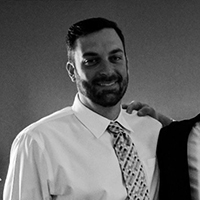Introduction to Drones (I2D) 19 June 2019 1500 - 1630
Unmanned Aerial Vehicles (UAVs) is the product of necessity, starting with flying bombs in 1917, followed by aerial targets (which became known as drones). Interest in UAVs picked up in the 1970s with the Israelis for the reconnaissance of surface-to-air missiles in Syria. With a minimum of 24 hours of endurance, the 1990s saw a shift in activity back towards unmanned aircraft that was computer controlled (predicated on Moore’s Law).
We will explore the options for control, with and without human operators in automated systems, as unmanned aircraft deal with communication and weather issues. UAVs vary in size, mass, altitude flown, endurance, range, and speed. Recent advances in the technology include networked systems, swarms, machine learning, and the emergence of multi-rotor platforms.
This overview covers the aerial environment with airspace physics, how to operate both large and small drones, and the role of GPS info as an integral part of navigation and control. We cover fixed-wing aircraft designs based on the Breguet range equations, Reynolds Number, and parametric fuselage/wing/tail designs. The key to unmanned flight is the design and use of its autopilot.
Our intention is to review basic aerodynamics and aircraft controls, as the airframe follows a typical profile starting with take-off, climbing, steady-state flight, turning, performing its mission, returning home, and landing. We require the understanding of aircraft dynamics in order to understand the stability limits of the autopilot in the longitudinal, lateral, roll, and altitude axes. In coordination with autonomous flight, the mission payload are sensors used to surveil and reconnaissance terrain such as tracking potential targets and other areas of interest.
We also address the practical issues such as the various options for take-off, landing, and recovery. However, with rotorcraft vehicles such as quadcopters, the mission sensor is capable of hovering in place as in a perch-and-stare scenario. In order for the entire system to work, it also have to include the ground station (portable or fixed), and the communication system that connects all the key pieces together.
This overview will also touch on the many open issues such as artificial intelligence, autonomy, collaborative platforms, swarms, robot ethics, security, and regulatory issues (especially as it relates to the National Airspace). This lecture serves as a primer on a more in-depth future workshop on the topic.
We will explore the options for control, with and without human operators in automated systems, as unmanned aircraft deal with communication and weather issues. UAVs vary in size, mass, altitude flown, endurance, range, and speed. Recent advances in the technology include networked systems, swarms, machine learning, and the emergence of multi-rotor platforms.
This overview covers the aerial environment with airspace physics, how to operate both large and small drones, and the role of GPS info as an integral part of navigation and control. We cover fixed-wing aircraft designs based on the Breguet range equations, Reynolds Number, and parametric fuselage/wing/tail designs. The key to unmanned flight is the design and use of its autopilot.
Our intention is to review basic aerodynamics and aircraft controls, as the airframe follows a typical profile starting with take-off, climbing, steady-state flight, turning, performing its mission, returning home, and landing. We require the understanding of aircraft dynamics in order to understand the stability limits of the autopilot in the longitudinal, lateral, roll, and altitude axes. In coordination with autonomous flight, the mission payload are sensors used to surveil and reconnaissance terrain such as tracking potential targets and other areas of interest.
We also address the practical issues such as the various options for take-off, landing, and recovery. However, with rotorcraft vehicles such as quadcopters, the mission sensor is capable of hovering in place as in a perch-and-stare scenario. In order for the entire system to work, it also have to include the ground station (portable or fixed), and the communication system that connects all the key pieces together.
This overview will also touch on the many open issues such as artificial intelligence, autonomy, collaborative platforms, swarms, robot ethics, security, and regulatory issues (especially as it relates to the National Airspace). This lecture serves as a primer on a more in-depth future workshop on the topic.
Moderator
-
 Jesse Rheingold
Airworthiness and Subsystem Engineer, Lockheed Martin Corporation
Jesse Rheingold
Airworthiness and Subsystem Engineer, Lockheed Martin Corporation
Speakers
-
 Adam Besachio
Guidance, Navigation, and Control, Manager, Northrop Grumman Corporation
Adam Besachio
Guidance, Navigation, and Control, Manager, Northrop Grumman Corporation -
 Wendell Chun
Research Professor, University of Colorado Denver
Wendell Chun
Research Professor, University of Colorado Denver
